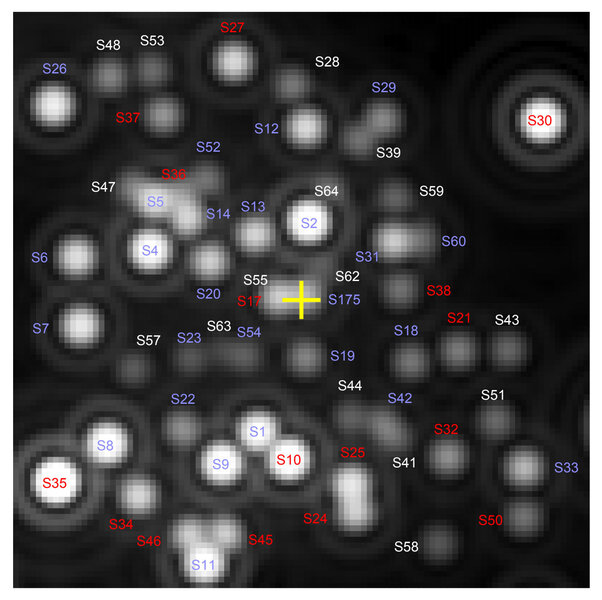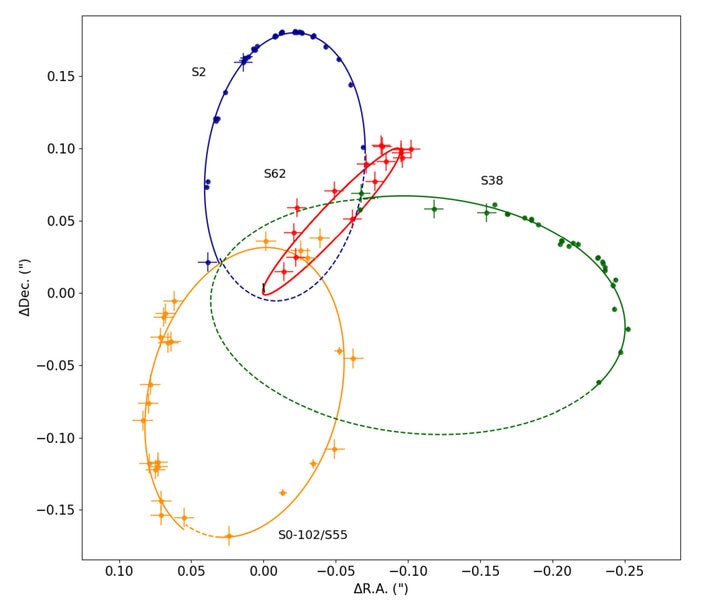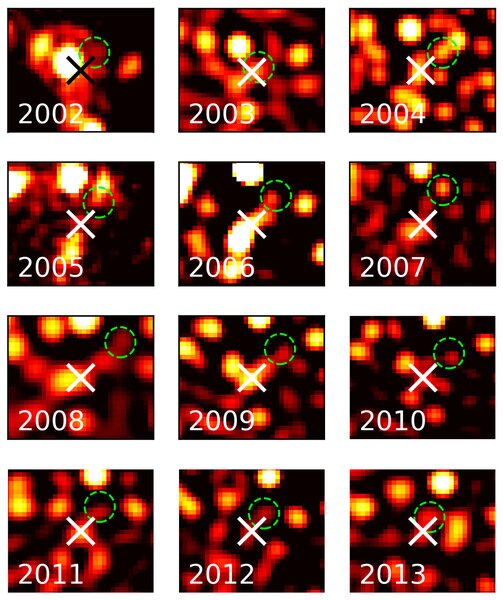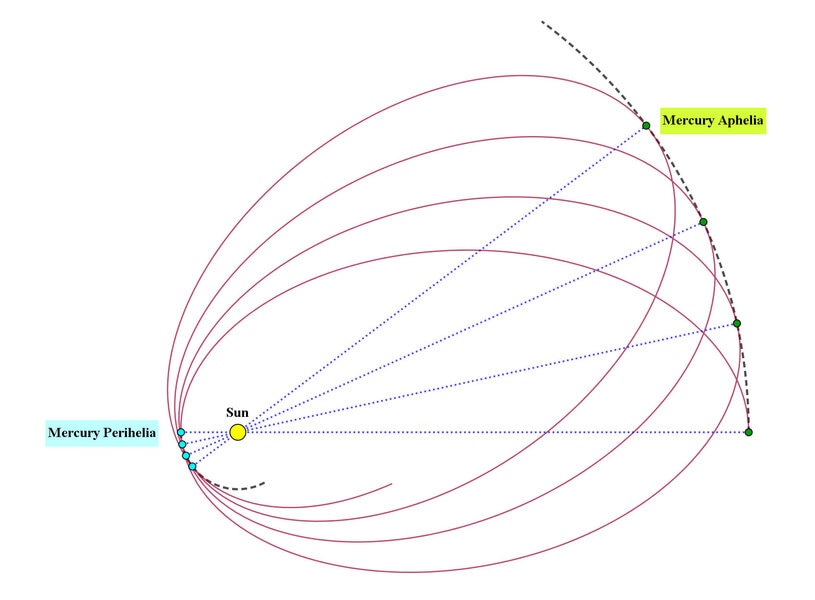Create a free profile to get unlimited access to exclusive videos, sweepstakes, and more!
Astronomers find a star dive-bombing our galaxy's supermassive black hole
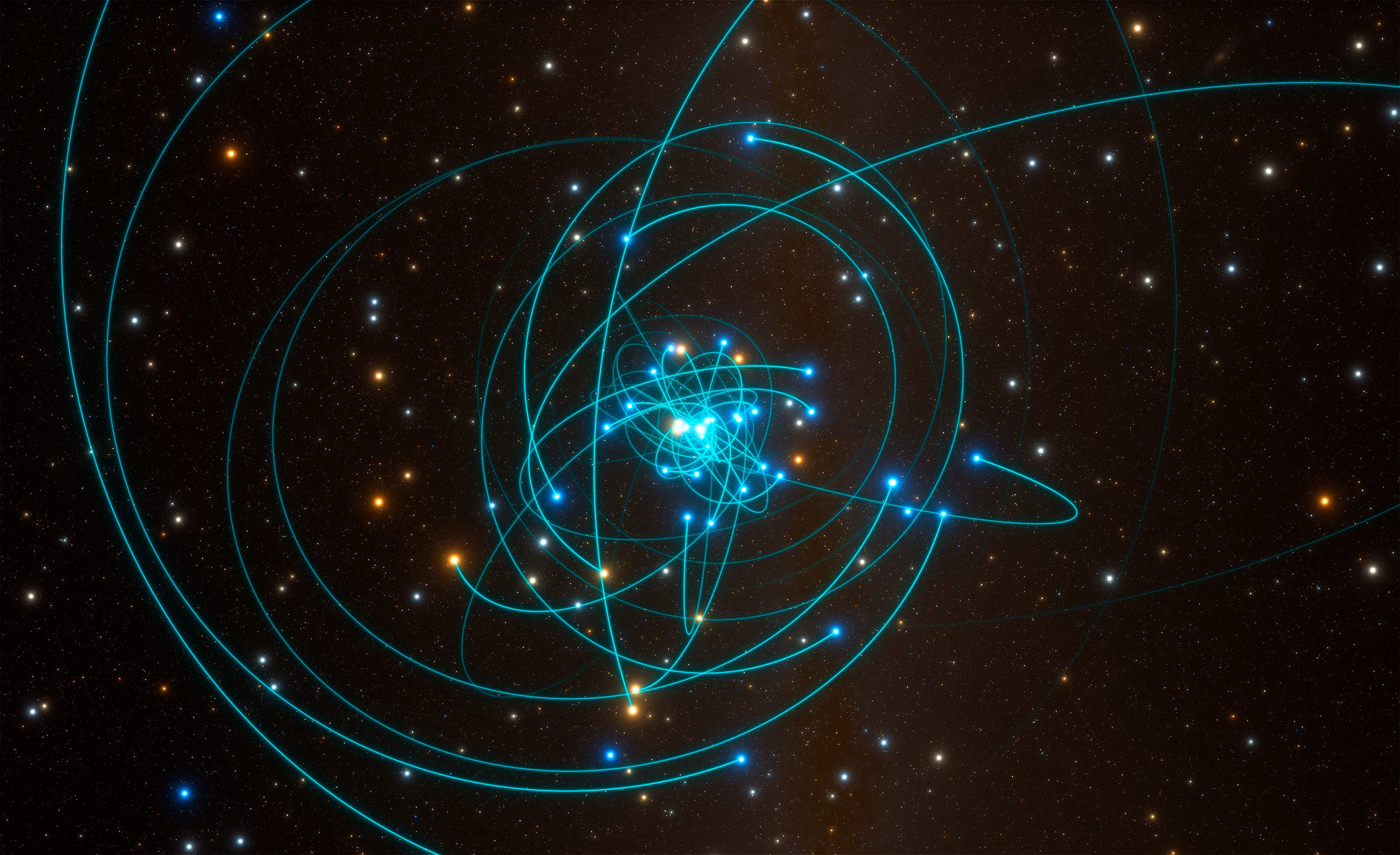
At the center of our galaxy lies Sgr A* — a supermassive black hole. With over 4 million times the Sun’s mass, you can see why it gets that moniker.
One reason we know its mass is that there’s a cluster of young, luminous stars orbiting around it. These are called S stars, and they form a group around the black hole about a quarter of a light year across — a few trillion kilometers. One of these stars, S2, has an elliptical orbit that takes it to a distance of just 16 billion kilometers from the black hole as it travels on its elliptical orbit. Until recently, that star had the closest encounter we knew of.
But a team of astronomers has been peering closely at the S cluster and found another star — called S62 — that shatters this record: It drops down to a harrowing 2.8 billion km from the black hole! That's closer than the distance of Uranus to the Sun.
Just writing that made the hairs on the back of my neck stand up. That’s a lot closer than I'd want to get. It’s almost as if the star doesn’t want to be that close either, because when it reaches periapse (closest approach) it screams around the black hole at 20,000 kilometers per second. Per second. That's 6.6% the speed of light!
Holy yikes. Just the idea of accelerating something the mass of a star to that kind of speed is mind-crushing.
The star S62 is faint, among the faintest it's currently possible to see in the cluster, which makes it difficult to observe over time to see its motion. However, using a pair of cameras on the enormous 8-meter Very Large Telescope in Chile, the astronomers observed it many times over the period of 2002–2012, literally seeing it move in their images as it orbited Sgr A*. Determining the shape of the orbit from those images was difficult, especially since the much brighter star S2 passed the black hole in 2018 and its glare interfered with seeing S62. Still, they were able to mathematically fit the positions of S62 to figure out what its orbit is like.
And what it's like is partly incredible, and partly terrifying.
The orbit is an extremely elongated ellipse, taking the star as close to the black hole as 2.8 billion km and as far out as 230 billion km (that latter is about 40 times the distance of Neptune from the Sun). The period, the time it takes to complete one orbit, is just a shade under 10 years. That's exciting, because it means the star’s position changes pretty rapidly. The more positions you can get for it, especially near periapse, the better the orbit can be determined.
Even better, it's currently heading back down toward the black hole now. The next time it plunges down and past it is predicted to be in March 2023, which is plenty of time to set up more observations. And that's very cool, because of a weird effect of relativity that would be very cool to see.
According to Newton's laws, if you have a less massive object orbiting a more massive object with nothing else nearby, then that orbit is fixed and will stay the same forever. However, if you look at this same system with the equations of Einstein’s General Relativity, the orbit will actually precess over time — that is, the long axis of the orbit will rotate — because relativistically speaking, the massive object is warping space. This distorts the way the lesser object orbits, and the orbit precesses.
We know this works because we’ve seen it with Mercury; its orbit is slowly rotating due to this very effect, and by the precise amount predicted by GR. As it happens, the amount an orbit rotates depends on how close the second object gets, and how massive the first one is.
Black holes are very massive, and S62 gets very close to SGr A*. The astronomers who observed it predict that the orbit of the star may precess by as much as 10° after it passes the black hole in 2023!
That's a huge amount, and careful observations should be able to see that. Even if it’s hard to determine because the observations are difficult, it'll do it again in another 10 years, and a 20° total shift should be easy to see either way.
S62 is now the record-holder for the star that gets closest to the black hole… but there might be others. They can’t get too close to the black hole, or else their orbit becomes unstable and they fall in, and even before that point the intense tides of the black hole will tear the star apart. Still, it makes me wonder what other stars we’ll see that get even closer to The Point Of No Return as we get better at observing this tiny but crowded region of the galaxy.
Tip o' the event horizon to Jason Spyromilio, who tweeted about this paper.
